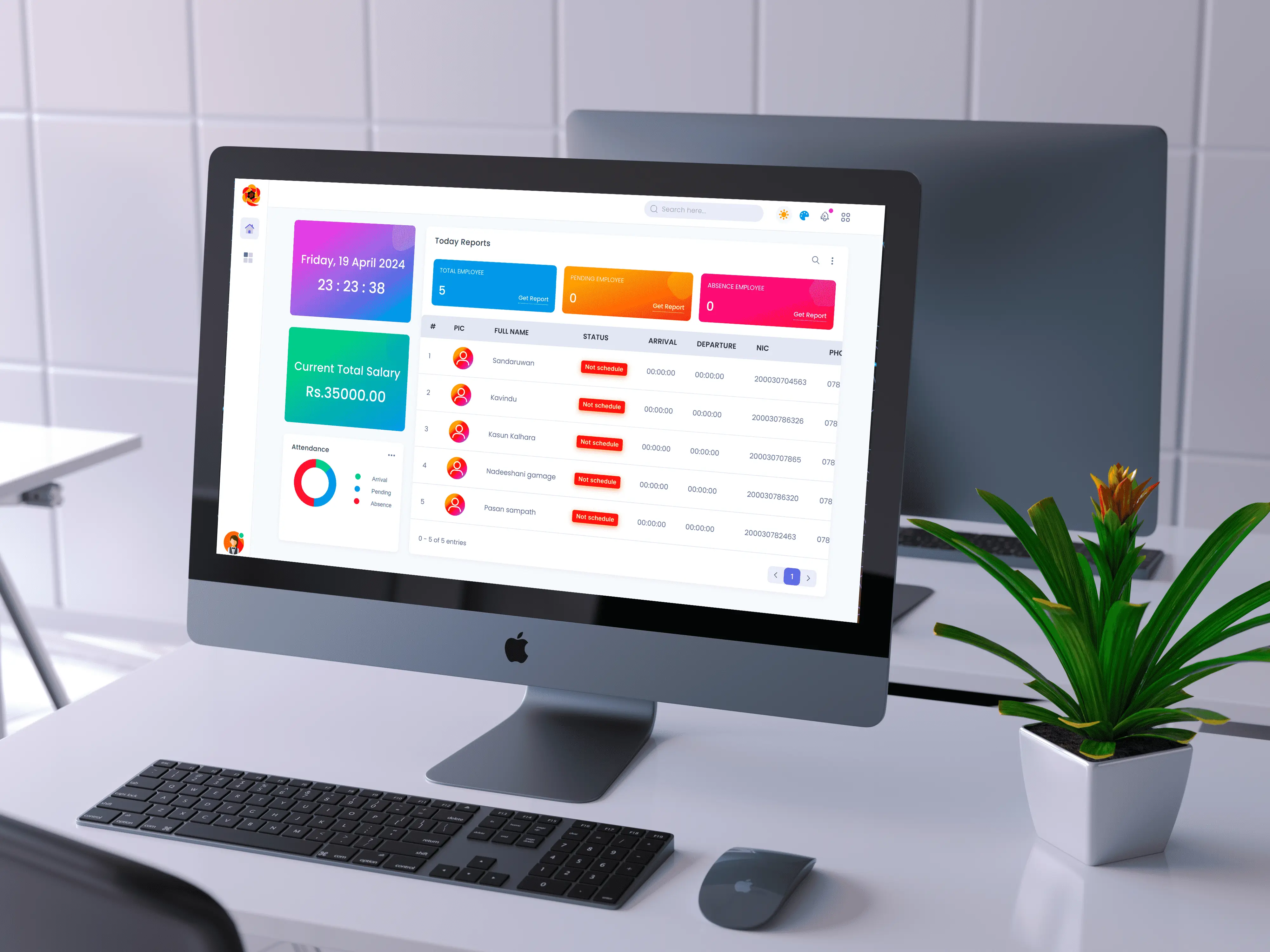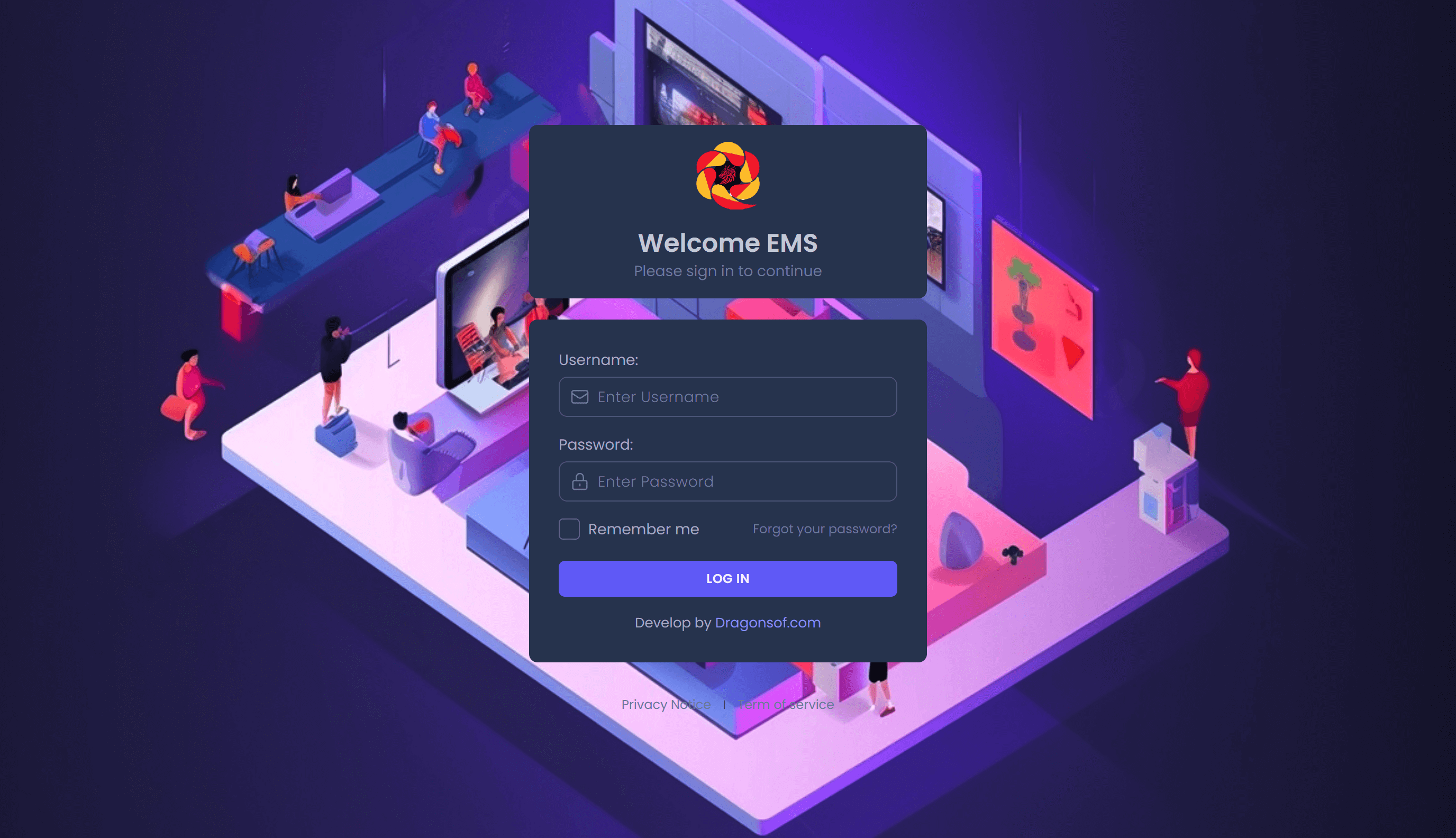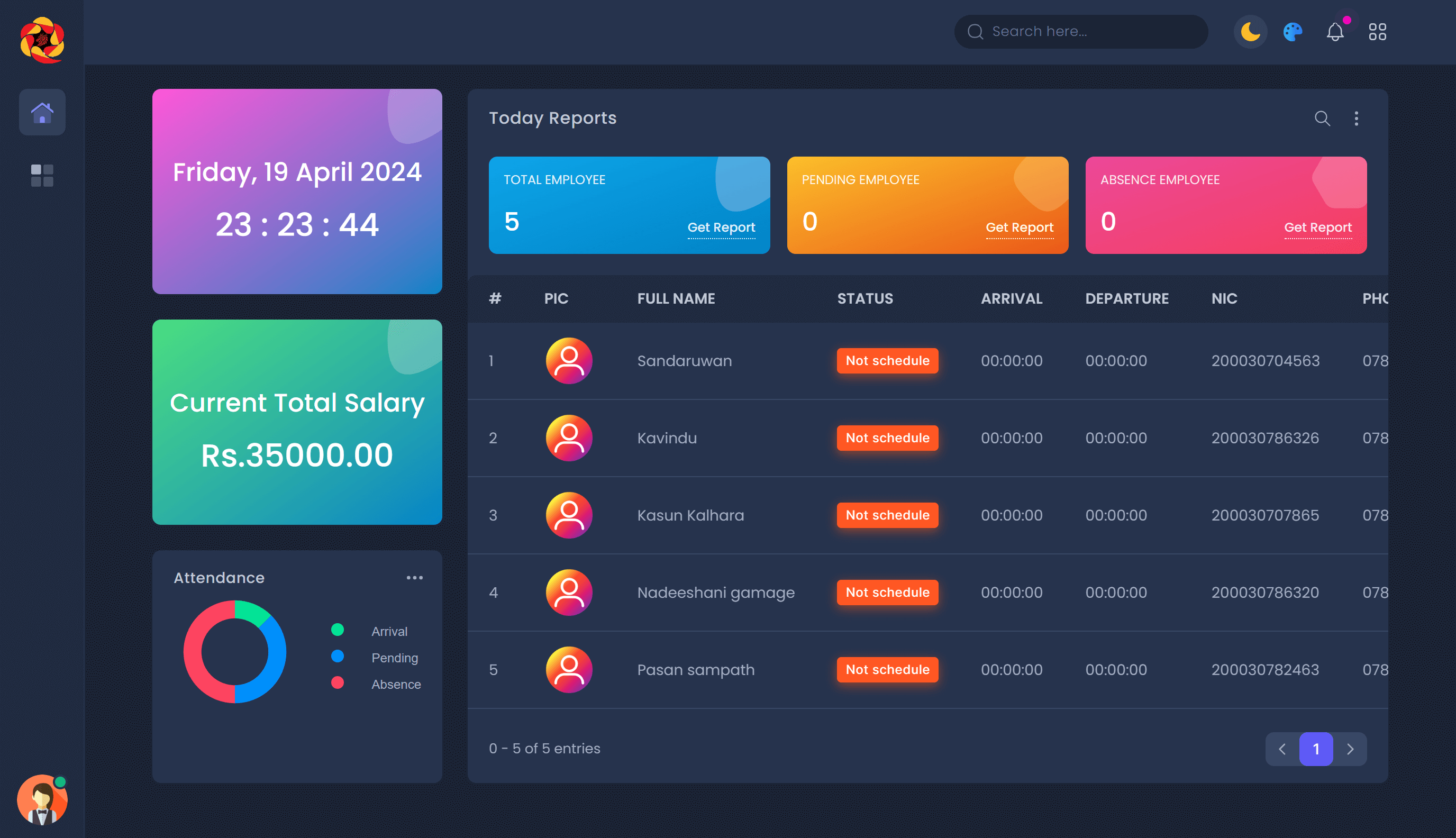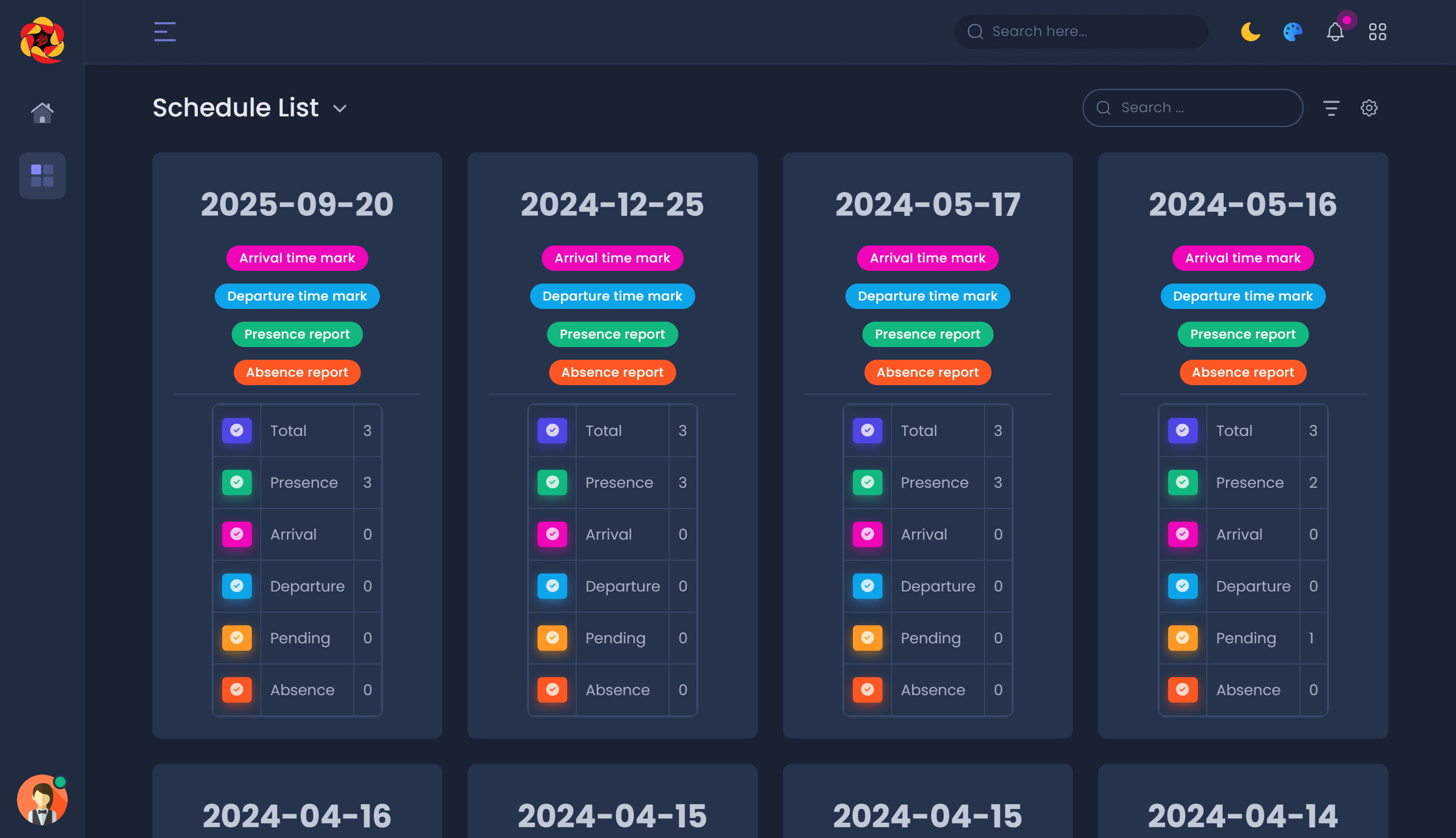EMPLOYEE MANAGEMENT SYSTEM

Employee Management System
In today's fast-paced business landscape, efficient employee management is the cornerstone of organizational success. From tracking attendance to managing payroll, every aspect of workforce administration demands precision and effectiveness. This comprehensive guide explores how to optimize your Employee Management System (EMS) to streamline operations and enhance productivity.
- Positions Details:
At the heart of any EMS lies the accurate categorization of job roles. By meticulously recording position details, organizations ensure clarity and coherence in their workforce structure. A user-friendly position registration form allows seamless integration of new roles into the system, empowering HR teams to stay agile in response to organizational needs.
- Employee Register:
The first step in integrating new talent into your workforce is through an efficient employee registration process. A well-designed registration form captures essential details such as full name, identification, contact information, and preferred position. This not only expedites onboarding but also lays the foundation for comprehensive employee profiles within the EMS.
- Employee Details:
Central to effective workforce management is maintaining detailed employee records. A robust EMS captures vital information including employee ID, contact details, position, and demographic data. This ensures HR teams have instant access to critical information, facilitating seamless communication and decision-making across all levels of the organization.
- Attendance Schedule:
Tracking employee attendance is paramount for ensuring operational continuity. An intuitive attendance schedule feature enables employees to log their arrival and departure times effortlessly. By providing real-time visibility into staff availability, organizations can proactively address scheduling conflicts and optimize resource allocation.
- Payment Schedule:
Timely and accurate payroll processing is fundamental to employee satisfaction and regulatory compliance. A comprehensive payment schedule module streamlines the payroll process by automating calculations and generating payment records. This not only reduces administrative overhead but also minimizes the risk of errors, fostering trust and transparency within the workforce.
- Conclusion:
In an era defined by digital transformation, the role of Employee Management Systems cannot be overstated. By leveraging advanced technologies and user-centric design principles, organizations can optimize their EMS to meet the evolving needs of their workforce. From simplifying employee onboarding to automating payroll processing, a well-implemented EMS is the linchpin of organizational efficiency and employee satisfaction. Embrace the power of modern workforce management and unlock the full potential of your organization today.
Copyright © 2019- Dragonsof Solution . All Rights Reserved.



